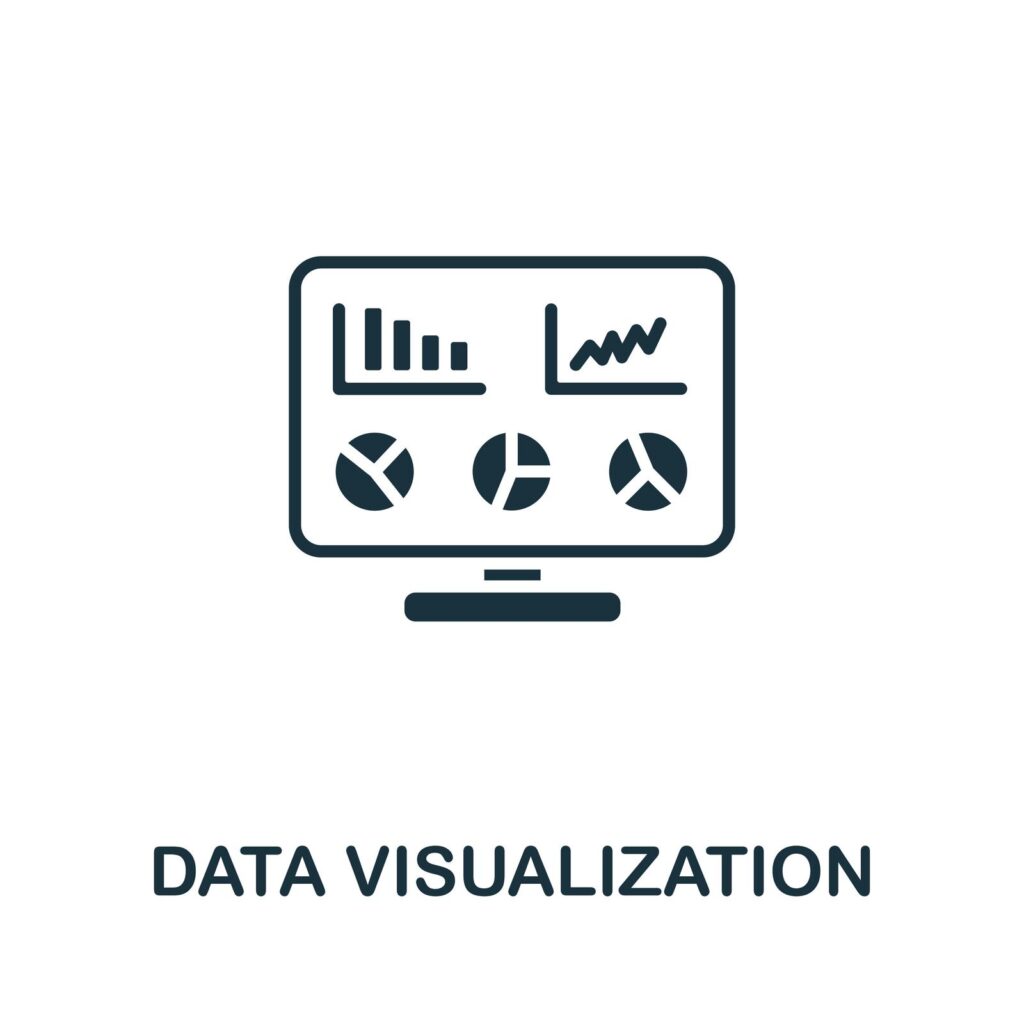Data science is one of the most influential and in-demand fields there is.
While data scientists need to have a strong background in applied math and statistics, they also need to be able to program.
Programming is a crucial knack for data scientists, allowing them to manipulate, interpret and analyze data without needing help from their peers.
This guide will go through the following in-depth:
- Programming for data science
- How much Coding is needed for data science
- Why Coding is required in data science
- What Programming Languages to learn in data science
- And If you can become a data scientist without Coding
Let’s jump in!

How Much Coding and Programming is Needed for Data Science?
Anyone looking to break into data science must have a solid coding foundation.
SQL and Python are two of the most popular coding languages and are fundamental for data scientists.
SQL is used for managing databases, while Python is a universal scripting language that can be used for anything, mostly data analysis and machine learning within data science.
Data scientists should also have a strong understanding of mathematics and statistics.
With so much data being generated every day, data scientists need to be able to maneuver through large sets of data and find hidden trends and patterns.
Those who can code quickly and efficiently will be in high demand in data science.

Do I need to know as much Code as a software engineer for data science?
You do not need to know as much Coding as a software engineer to get a job as a data scientist.
Most software companies are hiring more “full-stack” engineers, meaning these jobs require the coding ability to build both the backend and the front end.
While the amount of Coding needed for software engineers is increasing, the amount of required Coding for data science is decreasing.
This is because the modules and packages used for data scientists are improving every day, and with auto-machine learning being a hot topic in data science research, we may soon hit a point where we’re doing minimal Coding daily.

How Much Time do Data Scientists Spend Coding?
People often think that data scientists spend all day coding, but this is rarely the case.
While Coding is an integral part of any data scientist’s job, there are other things data scientists do, and it makes up (in my experience) about 40% of the job.
The other 60% of the time is spent understanding business problems, diving deep into statistical relationships within the data, and doing online research for new and innovative ways to handle problems.
When Coding, What exactly are data scientists doing?
When coding, I spend about 90% of the time on data preparation. (Source)
This includes sourcing the data, visualizing the data, messing with the distributions, fixing errors, exploring nulls, feature selection, and scaling.
Once I believe the data is at a good spot, I then move on to modeling, which is the other 10%.
The modeling process is every data scientist’s favorite part, but sadly not the part they get to do most often.
Once you’ve fully explored and prepped your dataset, you usually know what models you want to try and can get through an extensive modeling procedure pretty quickly.
If you were hoping to jump into data science and spend most of your time modeling, I’m here to tell you that it won’t be the case.

Why is Programming Required in Data Science?
Coding is an essential requirement for data science for a few key reasons.
First, you’ll need to use SQL to retrieve the data you want to work on from a database.
Constantly pinging your teammates for help retrieving data from the database will slow down the whole team, which most managers won’t like (and don’t allow).
Second, once you have the data, you’ll need to use Python to process it and build models.
Finally, and most importantly, many data science interviews are technical, so coding skills are essential to land a job in the field.
After you speak to a recruiter, you’ll usually have to write some pandas or SQL code to pass the interview.
If you cannot complete these challenges, companies will quickly move on because they assume you don’t have the technical abilities to do the job.
By learning to Code, you’ll be opening up a world of opportunity in data science.

What Programming Languages are Used in Data Science?
Here is a quick list of languages that are used in data science, ranked from most important to least important
- Python
- SQL
- R
- Scala
- JavaScript
- HTML/CSS
You need to learn SQL and Python to be considered for any data scientist position.
Some data science teams will only use R, so it’s great to be familiar with it.
Scala will come in handy if you land a more data engineering job or if you need to build pipelines yourself.
Javascript, HTML, and CSS will be important if you’re working for a SaaS company or any data scientist role that has a web application side to it.
I’d be careful early on with learning too many languages and stick to just Python and SQL.
What Jobs in Data Science Require Coding?
All jobs in Data Science require Coding. Some jobs outside of data science, but in the realm of data that sometimes do not need Coding, are data analysts.
Becoming a data analyst before jumping into data science is a great transition and will allow you to become familiar with data while you learn to code.

Can You Become a Data Scientist Without Coding?
It is no secret that Coding is commonly used at all levels of data science.
From junior to senior, data scientists spend most of their working time exploring, manipulating, and cleaning data.
Trust me, as someone who’s worked as a data scientist; you’ll need to know how to code to do this in any successful manner.
While there is a recent trend of “Auto Machine Learning,” which promises to make it possible for non-coders to become data scientists, the harsh reality is that Coding is still mandatory for data scientists to be successful in their jobs.
I’ve personally worked with many of these Auto Machine Learning platforms, and while they are promising, they still need a ton of work.
If you’re interested in becoming a data scientist, spend some time learning Python and SQL on the weekend or after work, and within no time, you’ll be applying for roles.
Are Data Science and Computer Science the Same Thing?
Data science and Computer Science are not the same thing. Computer science is more focused on understanding computing and its interaction with the world, and data science is more focused on data and how it interacts with the world.
You’ll often leverage insights from one of these domains and apply them to the other.
For example, when deploying models in data science, understanding servers and computing logic will help you create stable systems.

Do data analysts write Code?
Many think data analysts sit around crunching numbers all day, but that’s not the actual story.
While part of their job is to collect and organize data, they also use that data to answer questions and solve challenging problems.
And to do that, they’ll often need to write Code.
However, only some data analysts write Code.
Some can accomplish their work purely in Microsoft Excel or Google Sheets.
These types of roles are still hiring like crazy, as companies need people that can understand the business problems they’re faced with.
While those roles are great, Code gives you a massive head start when cleaning up a data set, running a statistical analysis, or creating a visualization.

The gentle introduction to Code is one of the things that makes becoming a data analyst an excellent stepping stone into a data science career.
They will already have the skills and experience to work with data, and by learning to Code, they can open up even more possibilities in the data science realm.
So if you’re interested in a career in data science, don’t be discouraged if you don’t have a background in Coding.
Data analyst roles are a great place to be to make the transition eventually.
Final Thoughts, Programming Need In Data Science
We’ve seen that programming is an essential tool for data scientists. It helps us clean and prepare our data sets for analysis and allows us to run more sophisticated analyses and models.
However, don’t be discouraged – learning to program can be a fun and rewarding challenge.
The online resources (including this tutorial series **see links below) make starting easier.
We hope you will continue your journey to becoming a data scientist and join us in using programming as an essential tool in our toolkit.
Other Data Science Articles
We love talking about data science; here are a couple of our favorite articles:
- What Diagnostic Software Does Ford Use? [Uncover the Hidden Secrets] - October 17, 2025
- Ultimate Guide: How to Make Your Logitech Mouse Double-Click with Software [Must-Read] - October 17, 2025
- Comparison: Do Investment Bankers or Software Engineers Make More? [Find Out Now] - October 16, 2025

